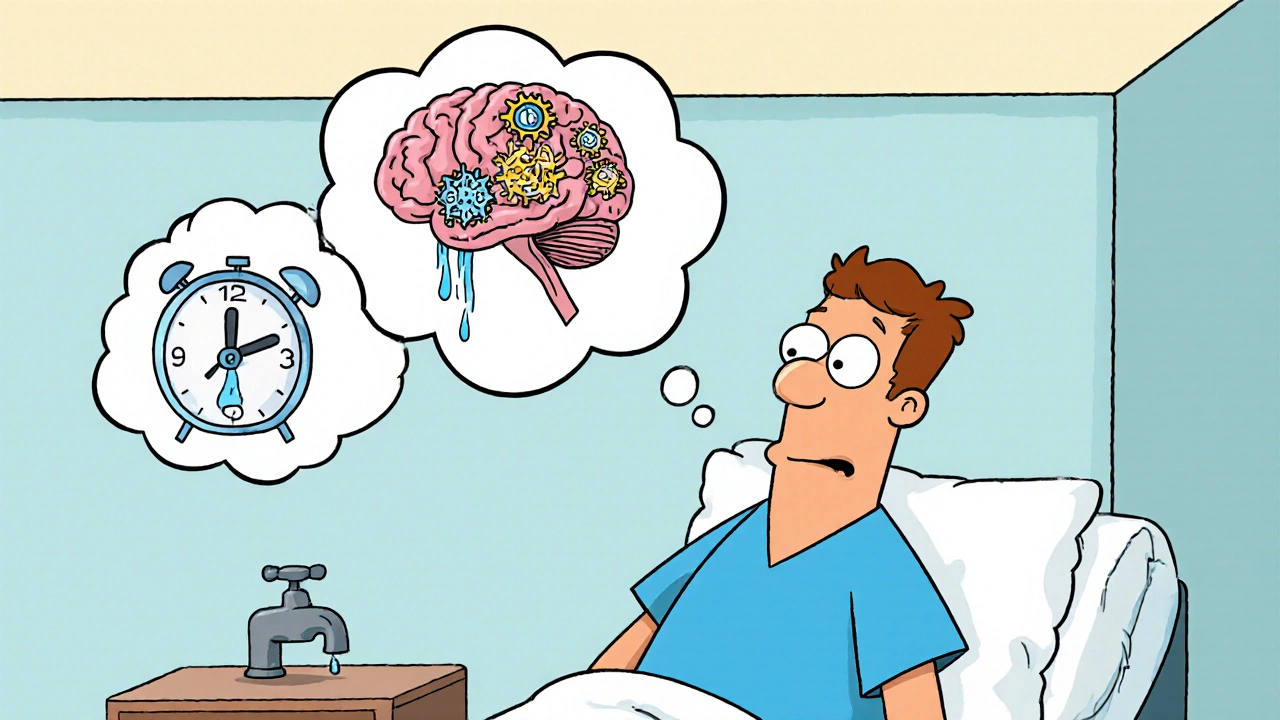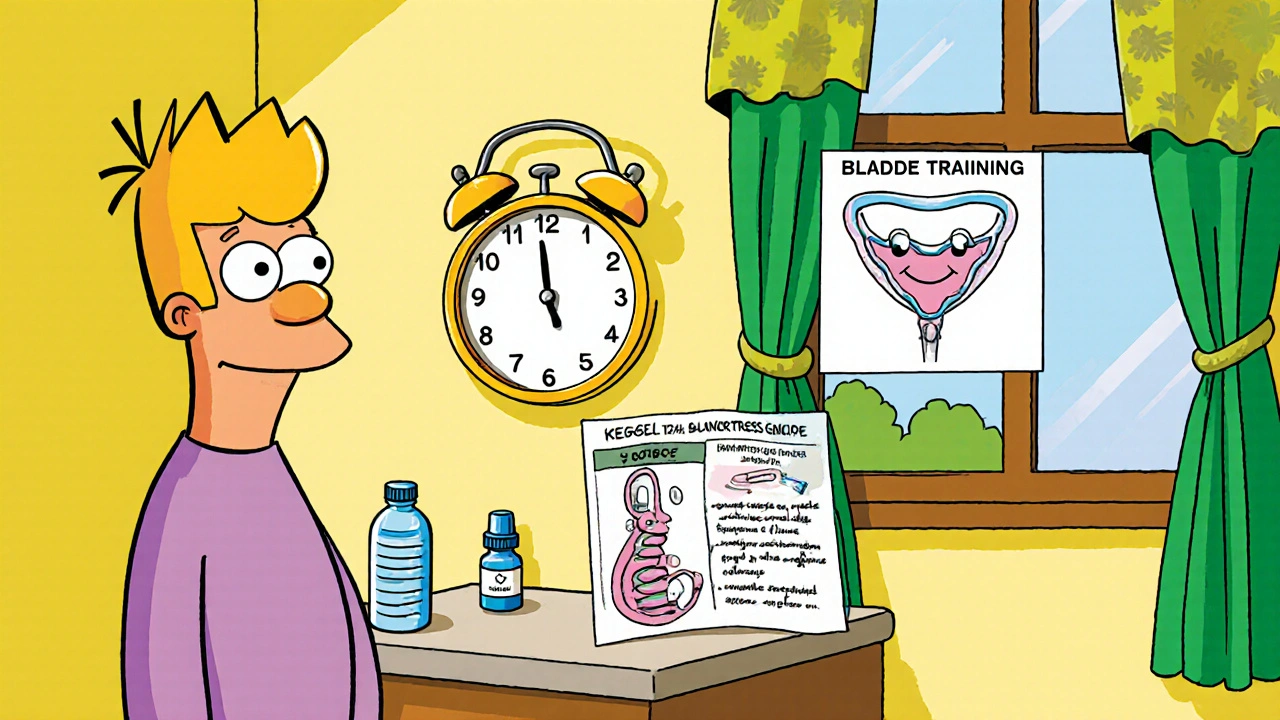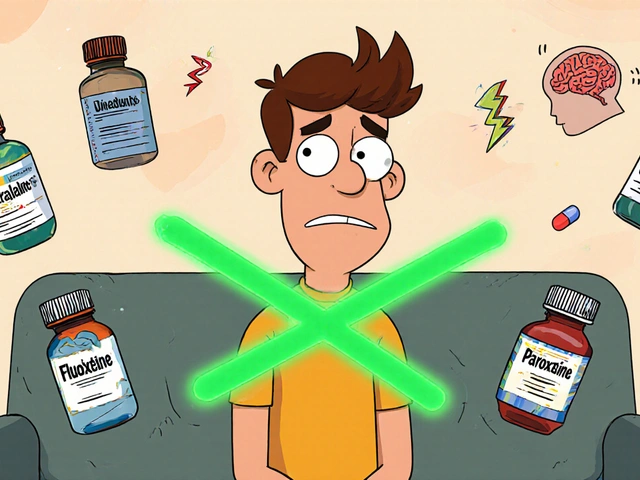
After a craniotomy or a serious blow to the head, many patients notice they’re running to the bathroom more often than before. That surge in urine output isn’t just inconvenient-it can be a sign that the brain’s water‑balance system has been disturbed. Below you’ll find practical steps to keep the bathroom trips under control while you heal.
Why a Head Injury Can Trigger frequent urination
When the brain’s “control center” for fluid regulation is damaged, the body’s normal checks on urine production slip. Two key mechanisms are usually involved:
- Neurogenic bladder is a loss of bladder control caused by nervous system injury. The nerves that tell the bladder when to store or release urine become erratic, leading to urgency or overflow.
- Disruption of antidiuretic hormone (ADH) production or release. ADH, made in the pituitary gland, signals the kidneys to retain water. Trauma or surgery that affects the hypothalamus or pituitary can cause ADH levels to plummet, a condition known as diabetes insipidus. Without ADH, the kidneys dump large volumes of dilute urine.
Both pathways can happen together, especially after a severe concussion, subdural bleed, or post‑operative swelling (cerebral edema). The result is a sudden, uncontrollable increase in urine volume.
Getting the Right Diagnosis
Before you jump to treatment, a clear picture of what’s going on is essential. Here’s the typical work‑up:
- Medical history: When did the extra trips start? Any new medications, especially diuretics or steroids?
- Physical exam: The doctor will check bladder fullness, reflexes, and signs of dehydration.
- Urinalysis: Looks for infection, blood, or glucose that might mimic other problems.
- Blood tests: Serum sodium, osmolality, and ADH levels help differentiate neurogenic bladder from diabetes insipidus.
- Imaging: A CT scan or MRI can reveal swelling, bleed, or pituitary damage that explains the hormonal shift.
Once the clinician pins down the cause, the management plan can be tailored.
Immediate Strategies: Controlling the Flow
In the first few days after surgery or trauma, the focus is on safety and fluid balance.
- Catheterization is the placement of a tube into the bladder to drain urine directly. A short‑term indwelling catheter can prevent accidents and allow accurate measurement of output.
- Fluid monitoring: Keep a log of intake and output. Aim for a modest fluid restriction (e.g., 1.5‑2 L per day) only if the doctor advises.
- Electrolyte replacement: If urine volume is high, sodium and potassium can drop quickly. Oral rehydration solutions help stabilize levels.
- Medication check: Some post‑op pain meds (like opioids) can worsen urinary urgency. Discuss alternatives with the surgical team.

Long‑Term Management Options
Once the acute phase passes, you’ll shift toward strategies that restore normal bladder habits.
Behavioral Techniques
- Bladder training is a scheduled‑voiding program that gradually lengthens the time between bathroom trips. Start with intervals of 30 minutes and add five minutes each week.
- Timed fluid intake: Drink most of your water earlier in the day and taper off after dinner.
- Pelvic floor exercises (Kegels): Strengthening the muscles that close the urethra can improve control, particularly for women.
Pharmacologic Help
When the hormone pathway is the culprit, medication can replace what the brain lost.
| Drug | Target | Typical Dose | Key Side Effects |
|---|---|---|---|
| Desmopressin | ADH replacement | 0.1‑0.4 mg oral or 10‑40 µg nasal daily | Hyponatremia, headache |
| Oxybutynin | Bladder muscle relaxant | 5‑10 mg PO TID | Dry mouth, constipation |
| Tolterodine | Anticholinergic | 2 mg PO BID | Blurred vision, dizziness |
All meds should be prescribed after a thorough evaluation by a neurologist or urologist.
Advanced Therapies
- Intermittent self‑catheterization: If the bladder won’t empty on its own, the patient can learn to insert a catheter periodically, reducing infection risk compared with a permanent tube.
- Sacral nerve stimulation: A small implanted device sends mild electrical pulses to nerves that control the bladder. It’s usually considered after behavioral and drug therapies fail.
Everyday Lifestyle Tweaks
Small habits can make a big difference:
- Limit caffeine and alcohol, both of which increase urine production.
- Keep a bedside commode or portable urinal if night‑time trips are common.
- Wear breathable, absorbent underwear to stay comfortable during recovery.
- Stay active: Gentle walks boost circulation and help regulate bladder reflexes.

When to Call a Doctor
Even with careful self‑management, certain signs demand prompt medical attention:
- Sudden drop in blood pressure or dizziness indicating dehydration.
- Fever, burning sensation, or cloudy urine that could signal a urinary tract infection.
- Inability to empty the bladder at all, which may require emergency catheter placement.
- Severe swelling of the legs or sudden weight gain, suggesting fluid retention elsewhere.
Early intervention can prevent complications like kidney damage or chronic incontinence.
Putting It All Together: A Sample Week‑Long Plan
- Day 1-2: Install a short‑term catheter, record total urine output every 4 hours, start fluid log.
- Day 3-5: Begin weaning off the catheter if output stabilizes (<1.5 L/24 h) and bladder feels full at regular intervals.
- Day 6-7: Start bladder training with 30‑minute void intervals; add Kegel set of 10 repetitions, three times daily.
- Week 2: Introduce desmopressin if ADH levels remain low; continue fluid restriction and monitor sodium.
- Week 3 onward: Gradually extend void intervals to 60 minutes, assess need for additional meds, and discuss sacral stimulation with a specialist if progress stalls.
Adjust the schedule based on how you feel-pain, fatigue, or new symptoms always signal a need to pause and reassess.
Quick Takeaways
- Increased urination after head surgery often reflects neurogenic bladder or ADH loss.
- Accurate diagnosis hinges on labs, urinalysis, and imaging.
- Short‑term catheterization and fluid monitoring keep you safe initially.
- Long‑term success blends bladder training, medication (desmopressin, anticholinergics), and lifestyle tweaks.
- Seek medical help for dehydration, infection signs, or complete urinary retention.
Why does head trauma cause me to pee more?
The brain regulates water balance through ADH and nerve signals to the bladder. Injury to the hypothalamus, pituitary, or spinal pathways can disrupt these signals, leading to either neurogenic bladder or diabetes insipidus, both of which increase urine output.
Is a urinary catheter safe after brain surgery?
Short‑term catheter use is common and safe when monitored closely. It prevents accidents, helps measure output, and reduces strain on the healing brain. Risks like infection rise with prolonged use, so doctors aim to remove it as soon as bladder function improves.
Can lifestyle changes replace medication?
For mild neurogenic bladder, bladder training, timed fluids, and pelvic floor exercises often suffice. However, if ADH loss is severe, a drug like desmopressin is usually necessary to prevent dangerous dehydration.
What signs indicate I need urgent care?
Sudden dizziness, low blood pressure, fever, burning urination, or an inability to pass any urine are red flags. Call your surgeon or go to the emergency department immediately.
How long does it take to regain normal bladder function?
Recovery varies. Some patients improve within weeks with training and meds, while others may need months of therapy or advanced interventions. Consistent follow‑up with a neurologist or urologist gives the best chance of a timely recovery.




Casey Cloud
October 21, 2025First thing to check is whether the doctor measured ADH levels.
If it’s low you’re looking at diabetes insipidus and a low‑dose desmopressin can bring things back to normal.
Keep a strict intake‑output chart for the first 48 hours – it’s the only way to spot a runaway kidney.
Avoid caffeine and alcohol until the hormone axis settles, they’ll just flood the system.
If you’re on a catheter, change it every 48 hours to cut infection risk.
Nick M
October 23, 2025The neuro‑endocrine feedback loop is being hijacked by what they call “nano‑pharmaceuticals” in the ICU, a subtle method to keep patients dependent on proprietary hormone analogues.
Our bodies have evolved a homeostatic relay that the “big pharma” elite can’t afford to let function naturally.
Watch the urine output logs; if the numbers keep spiking despite fluid restriction, you’re probably being dosed with a covert ADH suppressor.
Ask for the exact composition of any IV solution – the fine print often reveals hidden antidiuretic antagonists.
eric smith
October 25, 2025Oh great, another post about “how to pee less” after a brain job – because we all have time to sit around counting drops while the surgeons play Jenga with your skull.
Honestly, the only thing you need is a solid reminder that your bladder isn’t a mystery you can solve with Google – it’s a medical device that works on a schedule.
Erika Thonn
October 26, 2025In the quiet corridors of recovery, the mind whispers to the bladder like a reluctant poet seeking rhythm.
One might ask why the brain, the seat of consciencen, should meddle with the simplest act of excretion.
Perhaps it is a reminder that all grand constructs are ultimately bound by the humble physic of fluid.
When the hypothalamus falters, the body sings a discordant song of endless streams.
This discord is not merely a symptom, but a metaphor for the fractured self after trauma.
To embrace the flow is to accept the impermanence of control.
The ancient Stoics would counsel that we cannot command the tide, only our response to its surge.
Thus, logging each drop becomes a ritual, a modern scribe's record of the body's mutability.
Do not ignore the pattern, for patterns reveal hidden orders, even in chaos.
Medical science offers desmopressin, a synthetic echo of ADH, but remember that every pill is a proxy for a natural whisper.
Relying solely on medication without mindful observation is like building a house on sand.
Drink water wisely, not as a rebellion against the body's pleas.
Breath, posture, and calm intention can subtly tune the neural pathways that govern bladder reflexes.
In the end, the journey through frequent urination is a pilgrimage back to bodily sovereignty.
May your recovery be guided by both evidence and introspection, lest the endless river become a flood of despair.
Ericka Suarez
October 28, 2025The nation's health depends on beating this urinary tirany!
Jake Hayes
October 30, 2025Cut the caffeine, log the output, ask for a desmopressin trial – that’s the three‑step protocol.
parbat parbatzapada
October 31, 2025Yo bro, the hospital staff are feeding you lies about “normal” urine rates – they’re hiding the true scale of the flood to keep you glued to their charts, yo.
Kathrynne Krause
November 2, 2025Hey there, you’ve got this! Your body is a resilient machine and every logged drop is a step toward mastering your own rhythm – keep the spirit high and the bladder under your command.
Chirag Muthoo
November 4, 2025It is commendable that you are proactively monitoring fluid balance; such diligence will undoubtedly facilitate a smoother convalescence and mitigate complications.